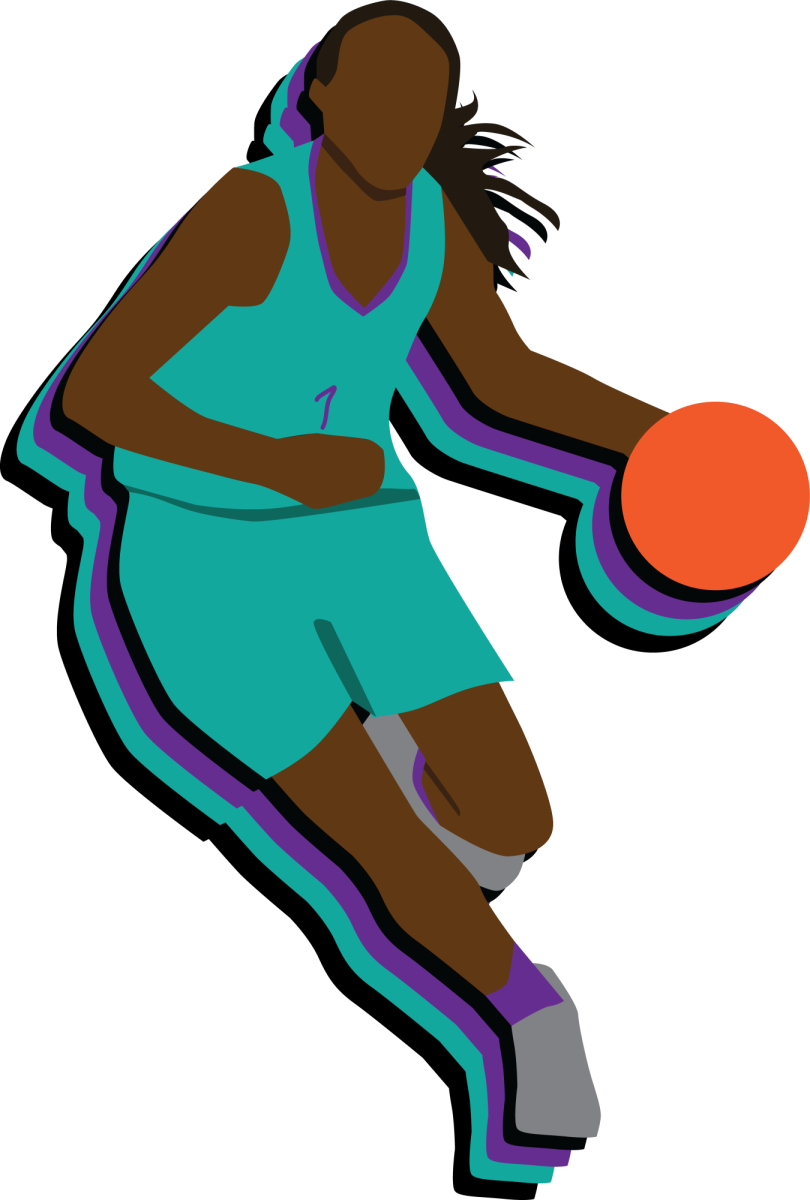The year was 1997. Titanic was the biggest movie in the world, Bill Clinton was president and a brand new sports league had just begun play: the Women’s National Basketball Association. The WNBA focused on shining a new light on the realm of professional women’s basketball. To prepare for its inaugural season, the WNBA awarded eight cities with franchises: New York, Los Angeles, Sacramento, Phoenix, Cleveland, Houston, Charlotte and Salt Lake City. Yes, that’s right — Utah used to have its own WNBA franchise.
The announcement of Utah’s new WNBA team received a wide variety of reactions. Many were excited for the new team, with one even stating that they were a “good thing for Utah.” Others criticized the new league, with some using statements rooted in sexism to uphold their arguments. Regardless of the public’s initial opinions, the WNBA intended to provide a new stage for professional female athletes.
Who Were the Starzz?
The Utah Starzz, whose name paid homage to the American Basketball Association’s Utah Stars of the 1970s, called the Delta Center home for six seasons. The Starzz got off to a rocky start in their first season, only winning seven of 28 games and posting the worst record in the league.
Heading into the 1998 season, the Starzz looked to grow and improve. The Starzz were awarded the first overall pick in the 1998 WNBA draft. With this opportunity, the Starzz selected Margo Dydek. Dydek had a remarkable rookie season, putting up 12.9 points, 7.6 rebounds and 3.8 blocks per game. Wendy Palmer went on to have an outstanding year in her second season with the team. She led the team in points for the second year in a row — but despite these impressive individual performances, Utah would only improve their record by a single win (which is less impressive when you consider they played two extra games that season).
For the 1999 season, the Starzz made major changes in a grave effort to see improvement. First and foremost, the Starzz drafted former American Basketball League Most Valuable Player Natalie Williams. On top of that, the Starzz were able to pick up Adrienne Goodson late in the draft. Goodson turned out to be an absolute steal, having a major impact on the Starzz’s future performance.
In July, the team traded Palmer and Olympia Scott to the Detroit Shock, receiving Korie Hlede and Cindy Brown in return. These moves paid off for the Starzz, as they earned 15 wins in the 1999 season. They finished the season tied for fourth place in the Western Conference and the thought of a future playoff appearance began to become more realistic.
Continuing on their path of improvement, the Starzz earned a winning record for the first time in franchise history in the 2000 season. Williams averaged a double-double and led the team in points per game. Goodson had another stellar season and Dydek led the team in blocks. With an 18-14 record, the Starzz placed fifth in the Western Conference, thus failing to make the playoffs as the league had expanded to 16 teams. If the 2000 Starzz had played in the Eastern Conference, they would have been the second-best team, only behind the New York Liberty.
In 2001, the Utah Starzz continued to grow, earning their first playoff appearance. The Starzz added another key player in Marie Ferdinand-Harris, who averaged 11.4 points per game in her rookie season. Dydek, Goodson and Williams also averaged more than 10 points per game, leading the Starzz to a 19-13 season. The Starzz faced the Sacramento Monarchs in their first playoff series, where unfortunately the Monarchs, who finished second in the Western Conference, swept the Starzz in two games.
The Starzz completed another great regular season in 2002, winning 20 games and finishing third in the Western Conference. In the playoffs, the Starzz faced the Houston Comets in the first round. At this point in time, the Comets had already cemented themselves as a dynasty, winning the first four WNBA championships.
Despite being the underdogs, the Utah Starzz won the first game of the series. Houston bounced back, winning game two by six points. The fate of both teams’ seasons came down to a win-or-go-home game three. Williams recorded 25 points in the Starzz’s crucial game three performance, winning their first playoff series ever. Sadly, their season ended not long after, as they were swept by the Los Angeles Sparks in the Western Conference Finals.
A Dreary Day in Salt Lake City
On Dec. 5, 2002, it was announced that the Utah Starzz was purchased and relocated to San Antonio, Texas. Despite their continued growth and built success, it wasn’t enough to keep the team in Salt Lake City.
Since their inception, the Starzz had struggled financially. In their final season, the average attendance at Starzz games trailed the league average by more than a thousand. Claims from Larry Miller, owner of the Utah Jazz, stated that the Starzz were “losing more than $1 million a year.” It was determined that Utah was no longer a market that could support the Starzz, even with their recent success.
And just like that, the Starzz picked up and left. They would spend 15 seasons playing in San Antonio as the Stars before moving to Las Vegas as the Aces in 2018. Williams still works with the franchise as the general manager and just won her second WNBA Championship this most recent season.
What Does the Future Hold?
Nowadays, the WNBA is quickly growing in popularity. More people are tuning in, attending games and engaging with league content through social media. This year, the league held a pre-season game in Toronto, which was wildly successful. The turnout for this game demonstrated the growing support for the WNBA, even in markets without teams.
But recently, the WNBA has had an issue with maintaining new players. The WNBA is one of the hardest professional sports leagues for an individual to play in, primarily because of how roster spots are available. Players, fans and WNBA commissioner Cathy Engelbert have expressed the need for league expansion.
In October 2023, the WNBA announced that a new expansion franchise would be coming to the Bay Area for the 2025 season. Many expect that a 14th expansion franchise will soon be announced, to create an even balance of teams in each conference. Furthermore, talks about expansion beyond 14 teams have occurred. With all of this conversation surrounding expansion, the question of “will Utah get another WNBA franchise?” has risen.
There is no doubt that Utah loves its sports. Considering Utah’s population growth since the Starzz left and its desire for professional sports franchises, one could make the argument that Utah would be a strong market for a new WNBA franchise. Learning from the mistakes that were made with the Starzz, proper support for a new franchise could establish Salt Lake City as a WNBA city.





Frank • Jan 4, 2024 at 8:55 pm
Sadly, the WNBA has never made a profit. They are the welfare league. They will never make a profit because women would rather spend their money watching reality TV shows, and that is where the sponsors spend the money.